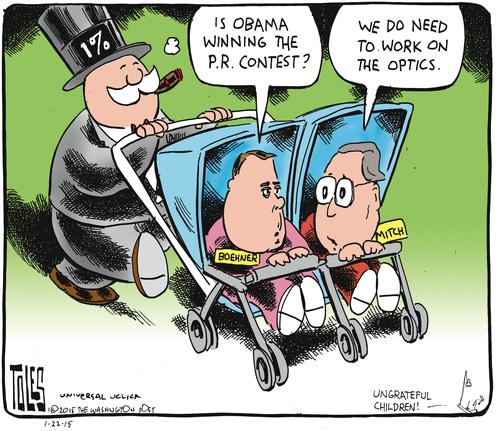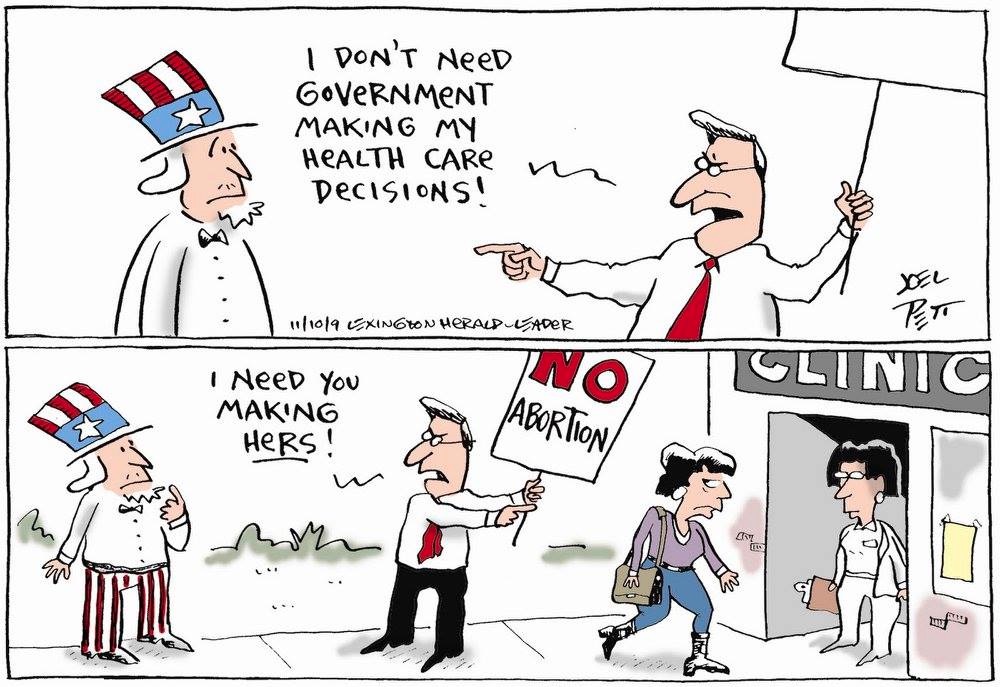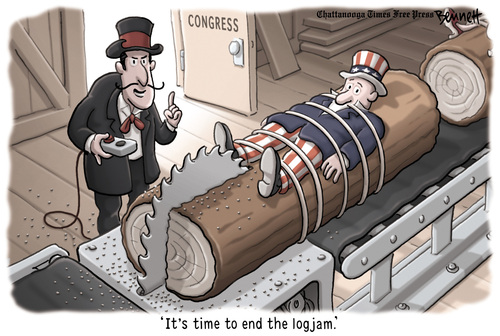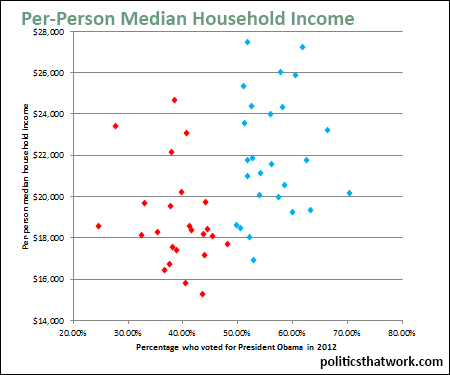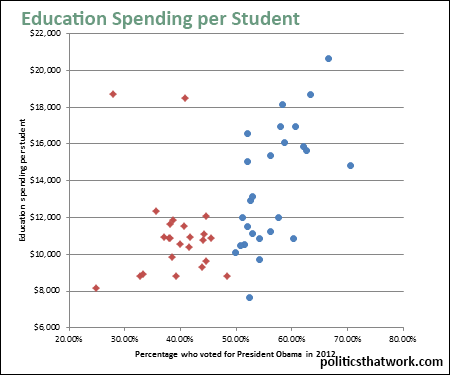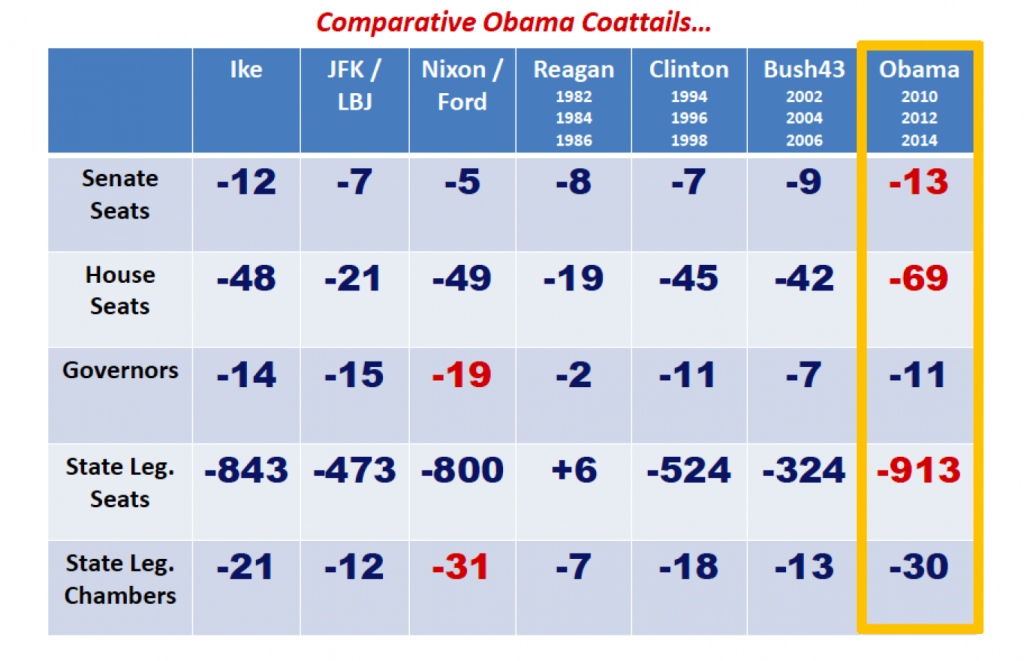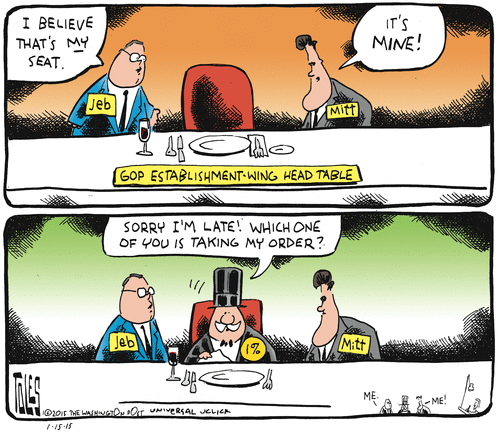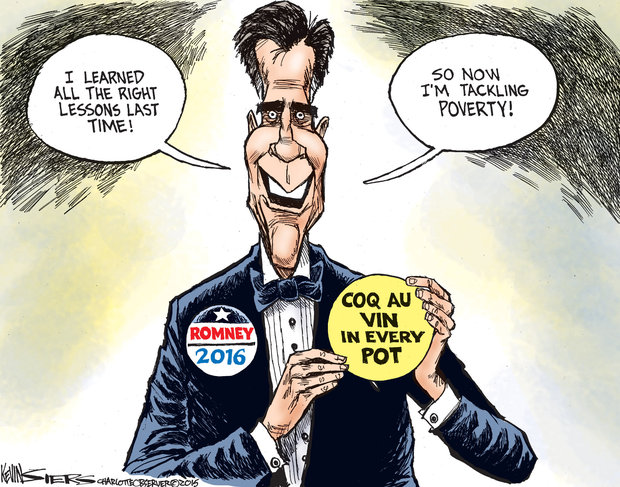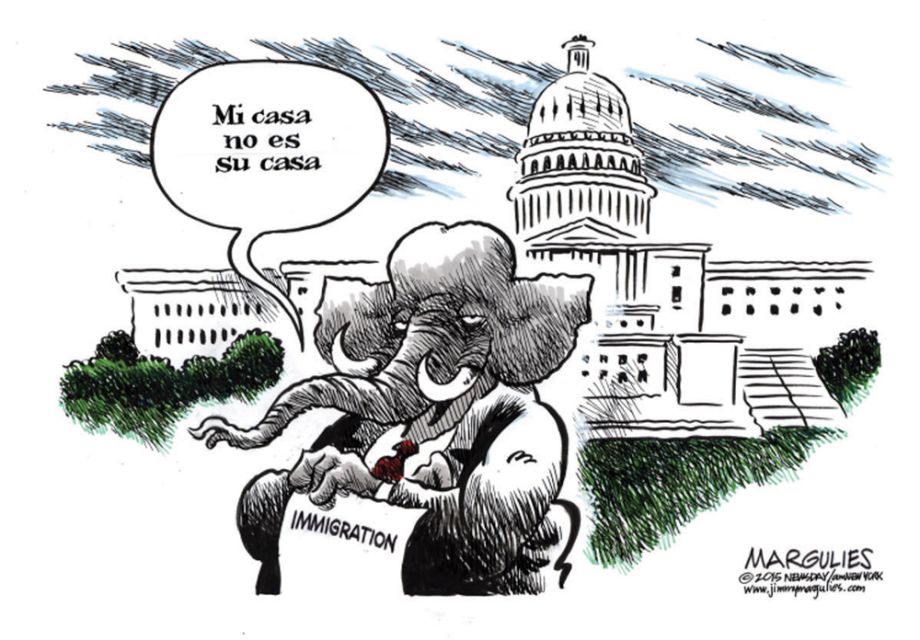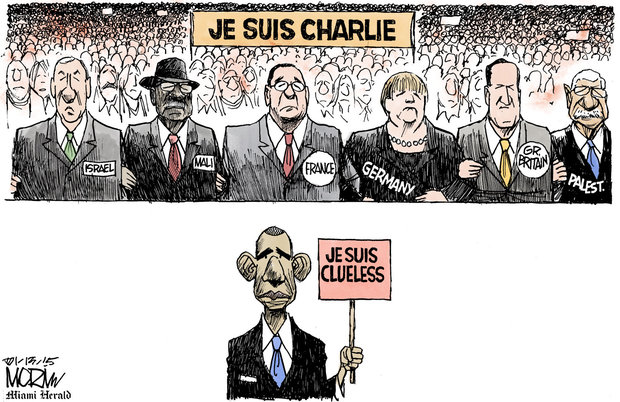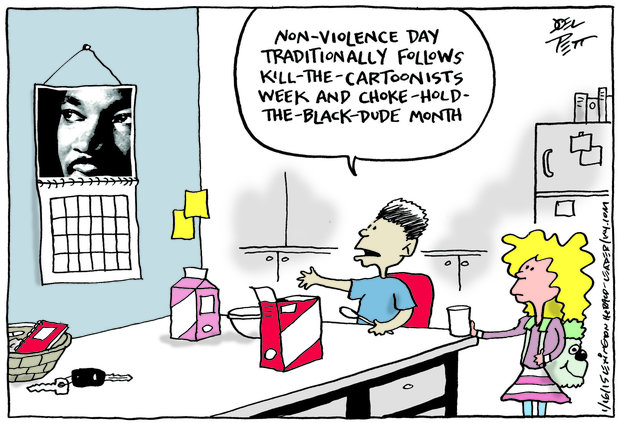(Galt’s Gulch was the sanctuary in Atlas Shrugged where Ayn Rand’s Real Men of Genius spurned American socialism for their own libertarian paradise.)
Welcome to the economy that has just turned the page. But not that page.
The World Economic Forum ended in Davos Switzerland. This is their 45th annual meeting at Davos. Who attends? 2,500 business leaders, politicians, diplomats and a few celebrities take part in the meeting. As in the past, 73% of the delegates are men, and almost 800 of the attendees are from the US.
According to CNN, most of the 1% flew in to Davos on private jets. Roughly 1,700 private flights landed in Switzerland, 5% more than last year. The Guardian reported that, for Davos insiders, the big story was the world economy, but this year, they weren’t concerned all that much about income inequality. From The Guardian’s live blogging at Davos: (emphasis by the Wrongologist)
A year ago, Davos attendees said income disparity was the top threat to world stability, as years of lobbying by the likes of Occupy Wall Street hit home. Today, though, the issue doesn’t appear in the top 10. The Ukraine conflict, and the turmoil in the Middle East, have elbowed it out.
However, another Guardian article described that many of the global oligarchs attending Davos are already planning their escape. These people know full well that the current game won’t last forever. Their response is to take as much money as possible, and flee before the pitchforks emerge. At a packed session in Davos, former hedge fund director Robert Johnson revealed that worried hedge fund managers were going to create an oasis of uber-wealth and then lock the doors:
I know hedge fund managers all over the world who are buying airstrips and farms in places like New Zealand because they think they need a getaway.
They want to leave to live in a Galt’s Gulch of their own creation. And Hedge fund managers are just a small part of the Plutocracy. The concentration of wealth and ownership in very few hands is growing, and that process has reached epidemic proportions.
In fact, according to the anti-poverty charity Oxfam, the wealthiest 1% will soon own more than the rest of the world’s population. Oxfam’s research shows that the share of the world’s wealth owned by the richest 1% increased from 44% in 2009 to 48% last year. Based on the current trend, Oxfam says it expects the wealthiest 1% to own more than 50% of the world’s wealth by 2016.
But, hasn’t our economy turned the page? Apparently, the Davos 1% types are way ahead of the Obama administration. From Monday’s NYT: (Brackets by the Wrongologist)
The middle class has shrunk consistently over the past half-century. Until 2000, the reason was primarily because more Americans moved up the income ladder. But since then, the reason has shifted: [Now] there is a greater share of households on the lower rungs of the economic ladder.
The Times uses yearly income of $35,000 to $100,000 to define middle class. The $35k amount is about 50% higher than the official poverty level for a family of four.
Here is the NYT’s graph of the current breakdown by income:
 (All numbers on the solid black lines in the chart are percentages of the US population and do not add to 100% due to rounding)
(All numbers on the solid black lines in the chart are percentages of the US population and do not add to 100% due to rounding)
From the NYT:
Even as the American middle class has shrunk, it has gone through a transformation. The 53 million households that remain in the middle class — about 43% of all households — look considerably different from their middle-class predecessors of a previous generation…
Recently, the fastest-growing component of the middle class has been households headed by people 65 and older. Today’s seniors have better retirement benefits than previous generations. Also, older Americans are increasingly working past traditional retirement age. More than eight million were in the labor force in 2013, nearly twice as many as in 2000.
A December New York Times poll showed that 60% of people who self-identify as middle class think that if they work hard, they will get rich. But the income and census data suggest that goal is moving increasingly out of reach.
If 60% of the middle class still think they can get rich, despite clear evidence to the contrary, the Plutocrats and lobbyists have successfully brainwashed the American public. They are unable to see just how systematically and catastrophically they have been played.
We may be able to take back control from the Plutocrats and the Oligarchs. But they now have control of our militarized police, they control cyber spying programs aimed at American citizens, and they control a byzantine political system completely removed from the average person’s day-to-day.
Gone are the days when we could storm the castle with torches and pitchforks, demanding change, and win.
If we succeed in bringing about real change, and not the faux change marketed by politicians, it will not be a pretty affair. They will fight. And they have the means to do so.




